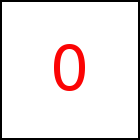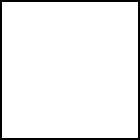taccGL™ Library Coordinate System
For 2D operation taccgl™ uses the same coordinates as HTML. Coordintes are measured in pixes starting with 0
in the top left corner of the document. So x coordinates grow from left to right and y coordinates
from top to bottom (in contrast to mathematics where y coordintas usually grow bottom up).
Although (in 2D) points with negative coordinates are invisible taccgl™ is still capable of
processing negative coordinates. Coordinates are all floating point values and so transitions
can also be positioned at subpixel level.
taccgl™ uses a fixed sized canvas for drawing of textures (currently
per default 1200*1424 pixels) and so HTML elements outside this
range need to be mapped. See Texture Canvas for
details. This limitation only applies to textures not generally for
coordinates of transitions.
taccgl™ always operates in a 3D space; 2D operation just means that z-coordinates are
0. All HTML elements sit in a plane with z-coordinate 0. Positive z-coordinates run away from the
user, denote objects behind the screen and behind the other HTML
elements. Negative z-coordintates describe objects between the user
and the screen. The user is supposed to be sitting (per default) at coordinates
(0,0,-5000) looking towards (0,0,0) at the objects on the screen from
top, left.
The 3D mapping used by taccgl™ is chosen in a very special way, so that
all objects in the z=0 plane are mapped onto themselves, i.e. to the same
x and y coordinates. This way HTML elements drawn by the browser fit into
a 3D scene drawn on the canvas and always stay readable without any
perspective distortion.
The eye point can be changed slightly, e.g. positioning the user below or to the right
of the screen. However, the user always looks in the (0,0,1) direction with is
othogonal to the screen and the z=0 plane. Even if the eye point is moved,
the projection is still moved and scaled in a way that the z=0 plane is mapped
onto itself as described above.
So taccgl™ as it stands right now is not (and unlike many other canvas 3D / WebGL™ libraries)
made for games that show a user moving and turing around in a 3D model, but instead
the idea of taccgl™ is to show moving 2D and 3D objects on the screen,
keeping the user, the screen, and other HTML elements is a fixed position.
This limitation makes it possible to combine HTML elements and animations
in one scene and so to really animate an HTML page rather than having a
more or less independent animation.
WebGL™ is a trademark of the Khronos Group Inc.
| 




